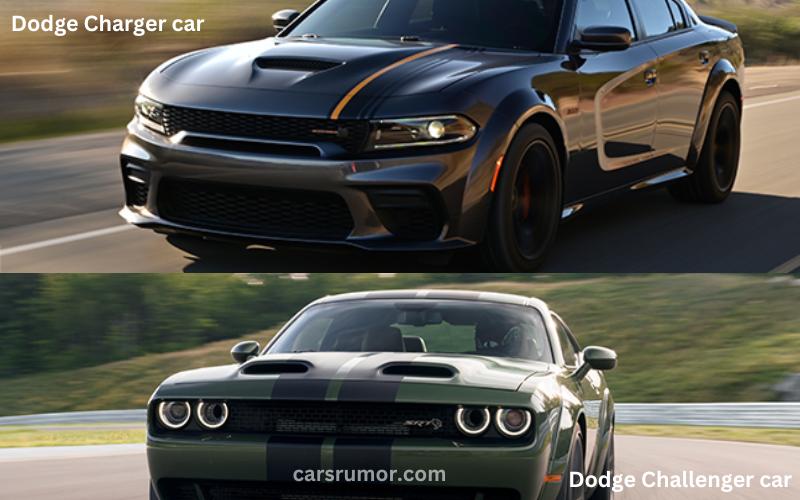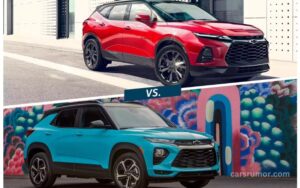Dodge Charger vs Challenger
Dodge, a brand synonymous with powerful, American-made vehicles, has produced two iconic models that have carved their places in automotive history—the Charger and the Challenger. These two cars share the same DNA but offer unique driving experiences. In this article, we’ll delve into the details, pitting the Dodge Charger against the Dodge Challenger, exploring their histories, performance features, designs, and more.
History of Dodge Charger
The Dodge Charger has a rich history, dating back to its inception in the 1960s. Initially introduced as a sleek, fastback muscle car, the Charger evolved over the years, adapting to changing automotive trends. From its early days as a performance-oriented vehicle to its modern incarnation as a full-sized sedan with a powerful engine, the Charger has undergone significant transformations.
History of Dodge Challenger
In the late 1960s, Dodge introduced the Challenger to compete in the growing muscle car market. With its bold styling and powerful engine options, the Challenger quickly became a favorite among enthusiasts. Like the Charger, the Challenger has seen various iterations, each bringing improvements and innovations to the model.
note : Dodge Charger vs Challenger History show in this article that model relevant.

Performance Features of Dodge Charger
When it comes to performance, the Charger doesn’t disappoint. With a range of engine options, including V6 and V8 choices, the Charger offers impressive acceleration and top-speed capabilities. The driving experience is enhanced by responsive handling, making it a joy for those who appreciate a balance of power and control.
Performance Features of Dodge Challenger
The Challenger, too, boasts a lineup of powerful engines, and the choice between them depends on the driver’s appetite for speed. Whether opting for the classic V8 HEMI or the more fuel-efficient options, the Challenger provides a thrilling ride with unmistakable muscle car character.
Exterior Design Comparison
The Charger and Challenger showcase contrasting design philosophies. The Charger maintains a sleek and modern appearance, blending aerodynamics with a touch of aggression. On the other hand, the Challenger embraces its retro roots, with a muscular and bold design reminiscent of classic American muscle cars.
Interior Features of Dodge Charger
Inside the Charger, drivers are greeted with a comfortable and technologically advanced environment. The interior combines modern amenities with a focus on driver comfort, making it suitable for both daily commutes and long road trips. Ample space and thoughtful design add to the overall appeal.
Interior Features of Dodge Challenger
Step into the Challenger, and you’ll find an interior that complements its aggressive exterior. With available features like high-quality materials, advanced infotainment systems, and customizable options, the Challenger’s cabin is designed to enhance the driving experience and provide a touch of luxury.
Driving Experience: Charger
Owners of the Charger often praise its responsive steering and dynamic handling. The driving experience is exhilarating, especially with the more powerful engine options. Whether navigating city streets or cruising on the highway, the Charger offers a balance of performance and practicality.
Driving Experience: Challenger
The Challenger, true to its muscle car roots, provides a driving experience that’s both powerful and nostalgic. It commands attention on the road, and its handling capabilities ensure that the driver feels in control, whether accelerating on a straightaway or taking on winding roads.
Safety Comparison
Safety is a foremost consideration for any car buyer. The Charger comes equipped with a suite of safety features, including advanced driver assistance systems. The Challenger, while also prioritizing safety, may differ in certain aspects. Realizing these differences is crucial for making an informed decision.
Fuel Efficiency
For those mindful of fuel costs, comparing the fuel efficiency of the Charger and Challenger is essential. The Charger, with its range of engine options, offers varying levels of fuel economy. Meanwhile, the Challenger, known for its powerful engines, may have different considerations for fuel-conscious drivers.
Price and Cost of Ownership
Beyond the initial purchase, understanding the long-term costs of owning a Charger or Challenger is vital. Factors such as maintenance, insurance, and fuel expenses can vary between the two models. Considering the overall cost of ownership ensures that buyers are well-prepared for the financial aspects of owning these iconic vehicles.
Popularity and Community
Both the Charger and Challenger have dedicated fanbases and vibrant communities. Enthusiasts gather at events, online forums, and social media to share their love for these vehicles. Understanding the popularity and community engagement can provide valuable insights into the ownership experience.
From Track to Street: How Dodge Charger vs Challenger Redefine Driving Pleasure
When it comes to performance on both the track and the street, few names resonate as strongly as the Dodge Charger vs Challenger . These iconic American muscle cars have redefined driving pleasure, offering a blend of power, style, and adrenaline-pumping experiences that enthusiasts crave. Let’s dive into how these vehicles transcend the boundaries between the track and the street, setting a new standard for automotive excellence.
Unleashing Raw Power
The heart of Dodge Charger vs Challenger lies beneath the hood, where powerful engines roar to life. Whether it’s the Charger’s sleek sedan profile or the Challenger’s classic muscle car silhouette, these vehicles pack a punch that translates seamlessly from the track to everyday roads. The unmistakable growl of their engines becomes a soundtrack for the driver’s journey, promising an exhilarating ride every time.
Track-Tested Performance
Dodge Charger vs Challenger models have a heritage rooted in track performance. The Charger, with its aerodynamic design, handles curves and straights with precision, making it a formidable presence on the racetrack. Simultaneously, the Challenger’s racing DNA ensures that its performance on the track is nothing short of breathtaking. Transitioning from the track to the street, drivers experience the same level of responsiveness and control.
Everyday Enjoyment
While these vehicles boast track-worthy capabilities, they are equally designed for the daily commute. The Charger’s spacious interior and advanced technology features make it a comfortable choice for long drives or city traffic. The Challenger, with its blend of retro styling and modern amenities, transforms any journey into a nostalgic adventure.
The Lifestyle Choice
Owning a Charger or Challenger isn’t just about having a car; it’s a lifestyle choice. The roar of the engine, the head-turning design, and the sense of power behind the wheel create an experience that extends beyond the confines of a race track. These cars become an extension of the driver’s personality, making every drive a celebration of automotive passion. you can use many light by this model . Honda Check Engine Light you also can use in your car.
Conclusion
In the showdown between the Dodge Charger vs Challenger , there’s no clear winner—it all depends on personal preferences. The Charger offers a modern, versatile package, while the Challenger provides a nostalgic, raw driving experience. Whether you prioritize performance, design, or a bit of both, Dodge has a model to suit your tastes.
FAQs
Which model is more fuel-efficient, the Charger, or the Challenger?
The fuel efficiency depends on the engine choice. Generally, the Charger may have more fuel-efficient options.
Are the Charger and Challenger suitable for usual use?
Yes, both models are designed for daily driving, offering comfort and practical features.
Do the Charger and Challenger have similar safety features?
While both prioritize safety, specific features may vary. It’s recommended to compare safety options when making









